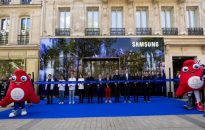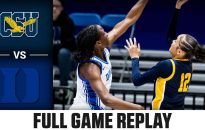Last Sunday marked the most disheartening Sunday I can recall in Rocky Mountain sports. The Denver Broncos were a major letdown. Typical of Broncos football, they squashed their playoff aspirations by losing to a weak team, faltering against Kansas City. Immediately following that game, the Denver Nuggets opted to relinquish a solid first-half advantage to […]


Last Sunday marked the most disheartening Sunday I can recall in Rocky Mountain sports. The Denver Broncos were a major letdown. Typical of Broncos football, they squashed their playoff aspirations by losing to a weak team, faltering against Kansas City.
Immediately following that game, the Denver Nuggets opted to relinquish a solid first-half advantage to the 76ers, ultimately suffering a devastating loss.
A spirited group of friends and I were among the resilient fans who witnessed both defeats from the stands. We braved the gloomy Denver weather for the 2 p.m. Broncos kickoff. Following that, we transitioned into the cozy atmosphere of the Pepsi Center for the 6 p.m. Nuggets tip-off.
Like many residents from the Western Slope, I don’t often get the chance to attend games in Denver. The commute is exhausting, especially in January when anything can arise. Plus, Monday morning arrives all too quickly. Furthermore, aside from the ticket price, attending games can be exorbitant – particularly when you have to splurge on $7 beers to drown your sorrows.
Even though I relished attending the games last weekend and am eager for more, I gained insight into why certain NFL games are blacked out in underperforming markets. It’s straightforward: when you weigh the cost of attending games live against purchasing an HD television to watch from home, the home viewing option is significantly cheaper. And with the quality of HD screens, you actually get a superior view of the action.
I completely understand the desire to stay home. No parking charges. No cramped seating. No biting cold. And no pricey 3.2 beer.
This reality hit home on Monday night as I relaxed in front of my TV to enjoy one of the finest Fiesta Bowls I can remember, with Boise State triumphing over TCU 17-10. The visuals were stunningly clear on the screen, and I enjoyed a beer from a 12-pack that cost the same as two beers at the event.
Of course, just when I believe I have the ultimate HDTV/surround-sound setup, something better emerges.
Today, ESPN revealed they will be highlighting at least 85 sporting events in 3-D for a full year beginning in June, starting with the first FIFA World Cup match between South Africa and Mexico. Additional games to be broadcasted in 3-D will encompass the 2011 BCS National Championship Game, college basketball matches, football games, and the Summer X Games.
It appears that ESPN has been developing and testing ESPN 3D for over two years, and this past season showcased the USC-Ohio State football game in 3-D at select theaters nationwide.
USA Today noted that most 3-D viewers found the images impressive, although some mentioned that the rapid camera shifts were tough on their eyes. As with any innovative technology, such developments necessitate compatible equipment. Audiences will require a 3-D capable TV and special 3-D glasses. (3-D TVs are being highlighted this week at the Las Vegas Consumer Electronics Show.)
For ESPN, broadcasting in 3-D will also entail additional costs. According to the report, locations where cameras are positioned for standard HD events are not suitable for a 3-D broadcast. If broadcasting simultaneously in HD and 3-D, ESPN will require two production teams and different commentators.
I vaguely recall when I first came across HD broadcasting a few years ago. At that point, it didn’t seem like such a remarkable leap forward. Yet here I am today, glued to my HDTV on Friday and Saturday nights, watching nearly everything available in HD, including NBA basketball, which I would have never considered before HD came into the picture.
That being said, I’m not particularly thrilled about ESPN 3-D…yet. When it becomes available and I can somehow afford it, I’m sure I’ll enjoy that experience. Once a majority of Americans adopt that technology, it will raise the question: Why even attend a game? To feel like we’re right there, all we’ll need to do is don some goofy glasses.
Is that what it will take for professional sports organizations to make game attendance more affordable? I’m guessing not, but here’s to hoping.














